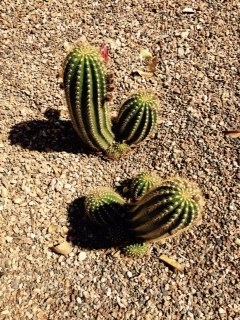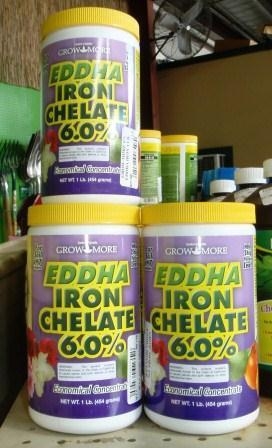Stink bug feeding can damage nuts
Q: I have several pecan trees and some of the nuts this year have black spots on them; others have a soft brown film on part of the back of the nuts. What caused these problems and what can I do to prevent it? The pecans have been producing for 30 years and I never had the problem until last year.
A: I am guessing these black spots are on the meat or seed that you normally eat. I also am guessing that when you eat this pecan meat that it is bitter. If you’re nodding in agreement, this is feeding damage by one of the stink bugs. I believe this is also the cause of the soft, brown film.
We have stink bugs in Las Vegas but one particular type of stink bug, or a close relative, is the leaf-footed plant bug that also damages pomegranates, pistachios and almonds.
This feeding damage causes the nut to drop off the tree or causes these black spots to appear on the meat. These black spots can be broken off of the nuts, and the nuts can be eaten with no problem.
To eliminate this damage, you’ll need to spray the tree with an appropriate insecticide when this pest first appears. Repeat applications will probably be necessary.
You’d have to start early, because these bugs will begin building their population on the tree as early as April. These insects also feed on tree leaves, vegetables and all of our major fruit trees. They overwinter on ornamental plants that remain evergreen in our landscapes.
The adults have wings so they can fly from neighbor to neighbor. Soap and water sprays will kill these insects if they are sprayed directly with this concoction. Soap and water sprays have no residual, so no poison remains when it dries. This can be an advantage and disadvantage.
Other sprays are fruit and nut sprays that contain synthetic pyrethrins or pyrethroids. These also will work, but the main problem you will have is getting the spray to cover the large tree from top to bottom.
Q: I have two large Argentine giant cactuses, both on a west-facing patio. One is in a large pot; the other is planted in native soil. The one in the pot always turns yellow on its south side this time each year. The one in the ground doesn’t. I think I’ve even tried a bit of iron, though I don’t really think that is the problem.
A: These cactuses usually turn yellowish because of sun damage, particularly if they’re only on the side facing the sun. Other possibilities could be salt buildup in the soil, insufficient nutrients, root damage and cold damage. But the bottom line is stress.
Because the cactus in the container has restricted roots and has no ability to take water from deeper or surrounding soils, this plant is more easily stressed growing in a container than the one planted in the ground. The cactus planted in the ground has a reputation for turning yellow (side facing the sun) in a stressful microclimate.
You should consider all of the above possibilities, but I think it is most likely sun damage or bleaching of the plant tissue by intense sunlight. They will probably do a little better without so much intense sunlight, particularly the one in the container.
All that being said, make sure that the soil has adequate drainage and you are not watering too often. Then you can eliminate the possibility of root damage because of the soil being too wet.
Choose a good fertilizer. I like Cactus Juice as a fertilizer for cactuses and succulents. I’ve had a lot of good reports from people using this fertilizer for these types of plants.
Next time you water, make sure enough water is applied so 20 percent comes out the bottom holes or moves past the roots and keeps the salts flushed.
Q: Is there any way to separate the babies from the mother cactus when they are joined along the stem or do you just let them grow?
A: Yes, you can separate the baby cactuses, or the pups, from the mother cactus even if they are growing along its trunk. However, I would let them grow. They are quite interesting in a landscape when they are allowed to grow more naturally.
The easiest cactuses and succulents to separate are those that produce what we call “offsets” or sometimes called “pups.” Offsets are pups that are produced separately from the mother plant, usually on short rhizomes.
The rhizome is cut, which separates the pup from the mother cactus. After cutting the rhizome, the pup is totally on its own and sends down its own roots to establish itself.
A pup is any “baby cactus” or succulent, whether it is an offset or attached directly at the stem. When pups are attached directly to the stem, they can be separated from the mother plant with a sharp, sterilized knife.
The pups’ wounds are allowed to “heal” for several days in a warm environment without any direct sunlight. This healing produces callus tissue which protects the mother and pups from dehydration and disease.
Once the healing finishes, the pup is placed on top of a soil with extremely good drainage where it can root. The soil is moistened about every three weeks during this time.
No rooting hormone is necessary. Roots are “geotropic,” which means they form on the bottom sides of plants and grow downward and away from light.
Q: I saved your recent article in the Las Vegas Review-Journal about dying photinia. I have pulled back the stone mulch and I am on my way to get compost, iron and wood mulch. Can I use the iron also on some of my other plants: green sage Texas (no blooms whatsoever) and golden euonymus (starting to drop its leaves)
A: Make sure you get the iron chelate with EDDHA in it. About the only place left in town that carries it any more is Viragrow. When you get mulch, get mulch that can decompose easily, not bark mulch.
You can use iron on any plant but most true desert plants won’t need it. The plants that normally need iron fertilizer, organics added to the soils and organic surface mulch are plants that originally came from climates with richer soils and more rainfall.
For instance, roses and all fruit trees in the rose family (apple, pear, peach, plum, cherry, almond, etc.) will benefit. Fruit trees not from these types of climates and not in the rose family, such as pistachio, pomegranate and fig, normally do not.
Desert plants like Texas sage will not normally need it. Euonymus and oleander typically don’t either. But mock orange, bottlebrush, Carolina cherry laurel, Japanese blueberry, magnolia, heavenly bamboo and many others will.
Keep the iron around — it won’t go bad if kept dry and out of the sunlight — and add it when you see plants beginning to yellow on new growth that develops during late spring and early summer months.
Regarding Texas rangers not blooming, it is probably because of improper pruning. They should not be hedge pruned (pruned with a hedge shears) in the spring as new growth is emerging. This is where the flowers are growing. Shearing them in the spring removes the flowers.
Golden euonymus (notice they call it golden and not yellow) would normally not need iron either.
However, it does much better over time with wood mulch, not rock mulch. Leaf drop is probably a water and mulch issue rather than iron.
Bob Morris is a horticulture expert living in Las Vegas and professor emeritus for the University of Nevada. Visit his blog at xtremehorticulture.blogspot.com. Send questions to extremehort@aol.com.






























